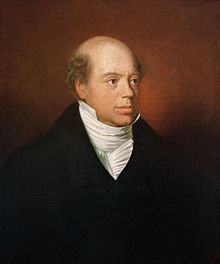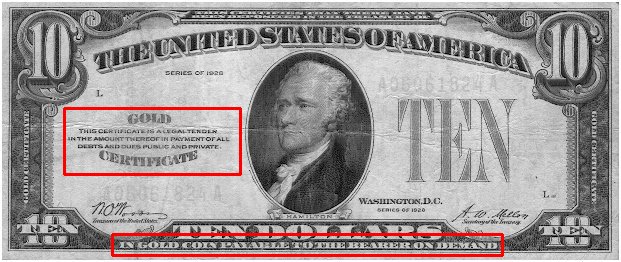Restoring the Lost Republic (6 PART SERIES): Part 1 – Money, Currency, Debt, & Credit Backgrounder

Restoring the Lost Republic (6 PART SERIES): Part 1 – Money, Currency, Debt, & Credit Backgrounder

On July 4th 2015, I published a manifesto under the pseudonym of GrandsonOfLiberty. My thought at the time was that the only way that the United States of America would return to its former glory as was envisioned by the Founding Fathers and blueprinted by the Constitution would be for its citizens to adopt a 3 Point Action Plan.
Today, in 2018, with all that is going on with the Deep State and Banking Cabal overtaking the country at all levels, I am more convinced than ever that the only way out of this is to cut their seeds of power.
This 3 Point Action Plan (a simple one and one without violence), in essence, targets the root cause of the country’s many ills (unending political corruption, government growing deficits and snowballing debt, perpetual war, unimpeded mass surveillance, militarization of police forces, a failed health care system, failing infrastructure, etc.), namely how it was usurped by international banking interests through the creation of the Federal Reserve in 1913. And the only way to restore the country would be to not only get rid of the Fed but, more importantly, deseed its member (owner) banks and deprive them of their capital, for without it they will no longer be able to fund all their nefarious activities, bribery, treason, wars, black ops, coups, and so on.
To make this post more readable and accessible to all, I’ve decided to present it as a 6 Part Series as per the following sections listed below. Therefore, I will begin this first post with the introduction followed by Part 1 – Money, Currency, Debt, & Credit Backgrounder.
Happy reading and be sure to share with others and post your comments below. Enjoy!
1 - Money, Currency, Debt, & Credit Backgrounder
2 - The Legitimacy of the Federal Government in Washington D.C.
3 - Department of the Treasury & The Federal Reserve (The Fed)
4 - The 16th Amendment and the IRS (Internal Revenue Service)
5 - 3-POINT ACTION PLAN
6 - Conclusion & Quotes from U.S. Presidents

We all know that money rules the world, not governments. This sentiment was, perhaps ironically and prophetically, best coined (pardon the pun) by Baron Nathan Mayer Rothschild when he said: “Give me control over a nation’s currency and I care not who makes its laws.”

Nathan Mayer Rothschild (1776 - 1836)
Before I lay out the details of the 3-POINT ACTION PLAN about what you can do to protect yourself and help restore the republic of the United States of America, it is critical for you to firstly get acquainted with some essential background information. Although this paper is lengthy, I’ve done my best to write it in the simplest of terms whereby anyone can easily understand the complex web of finance and politics which has been woven in the fabric of this great nation. Feel free to skip directly to the parts that interest you the most. There is something for everyone in this article; even seasoned financial journalists will find new and revealing material that they have never seen before. Enjoy your journey of enlightenment and first step towards restoring the former glory of the republic of the United States of America. Together we can make a difference.
Money, Currency, Debt, & Credit Backgrounder
The key word in the introductory paragraph is “money”. Governments and economic & financial systems need money to operate. Unfortunately, the term money is often confused with those of “currency”, “debt”, and “credit”. I will attempt to clarify the differences between these to help you better understand them.
Money is something that is generally accepted as a means of payment for goods & services and repayment of debt. Money has 3 functions: 1) a medium of exchange; 2) a unit of account; 3) a store of value. The third one – a store of value – is particularly important; since you work hard for your money, you want it to be able to maintain its “value”, or purchasing power, over time.
Early on in the American republic (and most other republics or nations for that matter) currency included coins and paper notes or certificates. Most coins were made of nearly pure silver while the certificates were backed by either gold or silver. Just have a look at some old currency notes from 1928; a $10 note stated that it was redeemable in gold coin (see Figure 1) and the $1 in silver coin (see Figure 2). They key idea is that it was backed by something of real value.

Figure 1 - A $10 Gold Certificate from 1928 which was redeemable in gold coin (1)

Figure 2 - A $1 Silver Certificate from 1928 which was redeemable in silver coin (2)
Over time money got replaced by “fiat currency” and “credit”. Fiat currency is not backed by anything of real value, nor can it be redeemed for anything of value; it is simply something created by governmental decree stating that it has value and can be used for payment of goods & services, taxes, and debt.
Fiat currency takes the form of paper notes. The Chinese invented fiat (paper) currency during Song Dynasty in the 10th century. Since then, there have been thousands of such fiat currencies that have been created and used by nations around the globe. Initially, such currencies were backed with something of value such as gold or silver; but over time, their issuers would either lessen the ratio of the backing or simply remove it altogether. Consequently, the nations (their central banks) simply ended up printing more and more paper notes lessening the value of each note as time went on; this is what we call inflation. History proves to us the indisputable fact that there has never been a single unbacked fiat currency that hasn’t gone to its intrinsic value of zero. Yes, you read that correctly, out of the thousands of fiat currencies ever created in history, not a single one has survived indefinitely.
Debt is also something of prime importance in our economic and financial systems. Debt is something that is owed, especially in the form of money. For example, if you don’t have money you may borrow some from a relative and pay him back later in the future. A company can borrow money from a bank; but the bank will charge it interest. That means that the company must repay the total amount borrowed plus extra money to cover the interest. Banks usually lend money at a certain interest rate. Governments also borrow money from banks; they need the money to pay for goods & services, pay their employees, fund projects, pay for wars, etc.
Credit, like debt, is not money. It’s simply a method of payment. Credit can be used to buy goods or services or to pay for things. Think of a credit card. Credit is not money.
[END OF PART 1]
Stay tuned for Part 2 - The Legitimacy of the Federal Government in Washington D.C. where we will dig into history a little bit and discover some interesting fact about the Constitution and other important laws regarding the jurisdiction of Washington D.C. and whether the United States is a corporation or a republic, or both.
Notes:
(1) Six Kinds of United States Paper Currency (Gold Certificates), http://www.friesian.com/notes.htm#gold
(2) Six Kinds of United States Paper Currency (Silver Certificates), http://www.friesian.com/notes.htm#silver